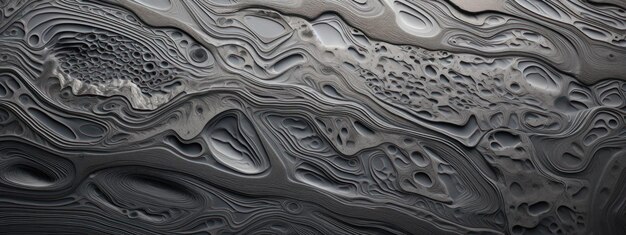
The Structured Elegance of an Abstract Painter

**Brooklin A. Soumahoro: The Open Window at François Ghebaly Gallery, Los Angeles**
Brooklin A. Soumahoro’s exhibition *The Open Window* at François Ghebaly Gallery draws its title from Henri Matisse’s iconic 1905 painting *Open Window, Collioure*, a well-known example of Fauvism. While Matisse’s work captures the Mediterranean coast through a window, using vivid colors to blur the boundaries between interior and exterior spaces, Soumahoro’s work artistically extends this metaphor. Instead of depicting explicit scenes of nature or life, Soumahoro takes the viewer into an abstract exploration of perception, light, and form, employing a recurring visual motif that borrows from both historical and cultural influences.
### The Window as Composition and Structure
The paintings in Soumahoro’s exhibit all share a consistent framework: a series of concentric rectangles, or windows, that are filled with alternating triangular patterns. These triangles seem to converge towards central axes, creating a dynamic spatial illusion that draws the viewer’s gaze inward. As the concentric triangles approach the center, they appear more compressed, almost creating the sensation of approaching a visual asymptote. This repetitive geometry lends a hypnotic effect, drawing viewers toward an endpoint that constantly feels just out of reach.
That underlying structure serves as a stepping stone for Soumahoro to experiment with color and light. Her color palettes and the nuanced interactions between hues — warm purples, fiery oranges, moody reds, and serene blues — result in dramatically different emotional resonances. One painting, *Window, Orn/Prl.1.24* (2024), evokes the intensity of a blazing sunset, while another, *Window, Red/Ble.1.24* (2024), conveys the heavy atmosphere of dusk, more introspective and brooding. The sensation of depth and light in these works depends not just on her use of color but also on how the edges of these triangles — in contrasting hues — tease between background and foreground as viewers trace the shapes toward the vanishing point.
This consistent symmetry makes each piece a study in variations of sensory impact. By keeping the structure almost static, the viewer’s attention can shift toward more subtle details like the handling of pigment, light, and brushwork — all of which Soumahoro subtly tweaks from one piece to the next.
### The Interplay of Influences
According to the exhibition’s press release, Soumahoro draws from a wide array of visual influences, ranging from conceptual artists like Sol Lewitt and Agnes Martin to the patterns and craftsmanship inherent in West African textile traditions such as Adinkra symbols and Kente cloth designs. However, one could also discern influences from other artistic sources, which add to the multi-layered meanings of her works.
For instance, her triangular motif resonates with the *Flying Geese* pattern often found in American quilt-making traditions. Much like this deeply symbolic quilting pattern — which has cross-cultural significance — Soumahoro’s triangles echo ideas of movement, flight, and transformation. They also nod towards the work of Bauhaus artists Anni and Josef Albers, particularly in terms of their explorations of color theory and geometric abstraction.
That being said, Soumahoro’s abstract geometry does not so much adhere rigidly to any one tradition but, instead, opens a new line of dialogue between diverse visual languages. She invites viewers to interpret her work through their own unique cultural and aesthetic lenses. Like the window motif, her work acts as a portal for subjective interpretations, allowing multiple meanings, influences, and experiences to coexist.
### Meticulous Process, Effortless Outcome
One remarkable aspect of Soumahoro’s paintings lies in the delicate balance between process and outcome. Her geometric exactitude may suggest a laborious technique, but the visual experience is far from constrained or rigid. There is a sense of organic development in the paintings where form and color intertwine with fluidity, even despite their highly orchestrated compositions.
Soumahoro’s work starts with detailed preliminary studies, which involve careful designs of color interactions and precise brush handling. She then brings this meticulous planning to life on the canvas through layers of textured brushwork that manipulate the reflection of light within the canvas, creating shimmering, almost alchemic effects. Surprisingly, despite the discipline required to produce these pieces, the painted surfaces seem expansive and light, with ample breathing room.
This tension between controlled, almost mathematical structure and ephemeral light-handling creates paintings that engage in a continuous dance between the two-dimensional and three-dimensional. Viewers might experience a shifting perception of each piece as what initially seems tight and bounded soon gives way to a more open, shared visual experience.
Ultimately, Soumahoro’s paintings in the *Open Window* series connect to one of the vital elements that has fascinated artists for centuries: the ability of paint to transcend its basic materiality and become light. As viewers move through the gallery space, they are captivated